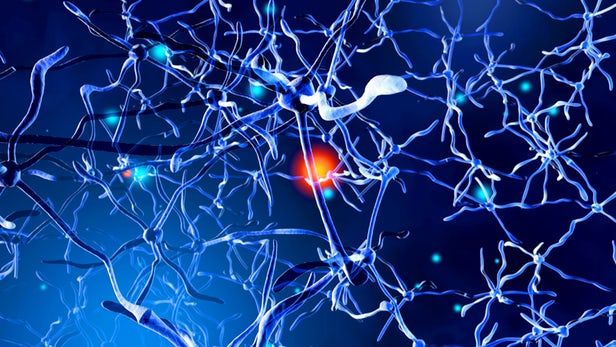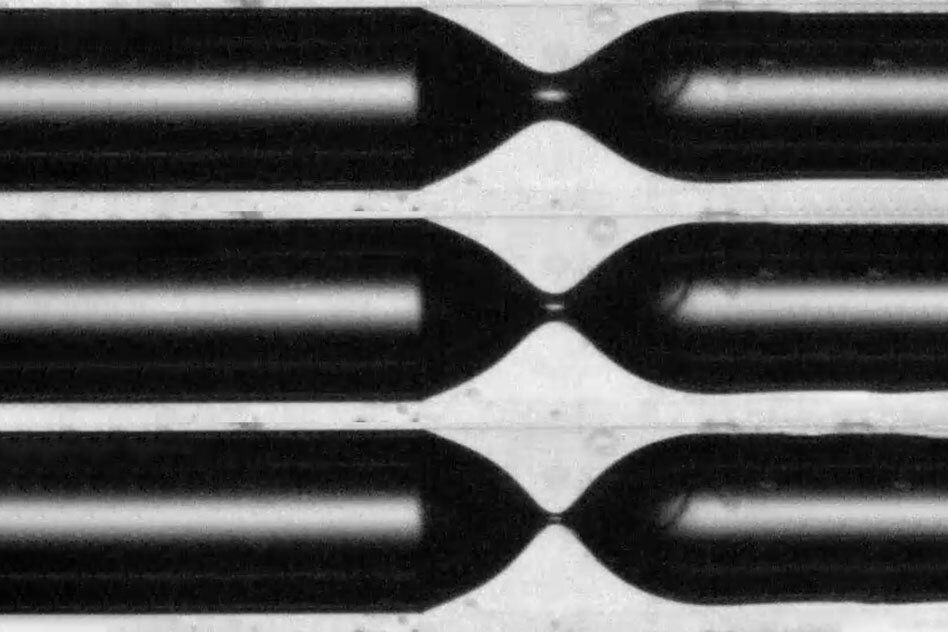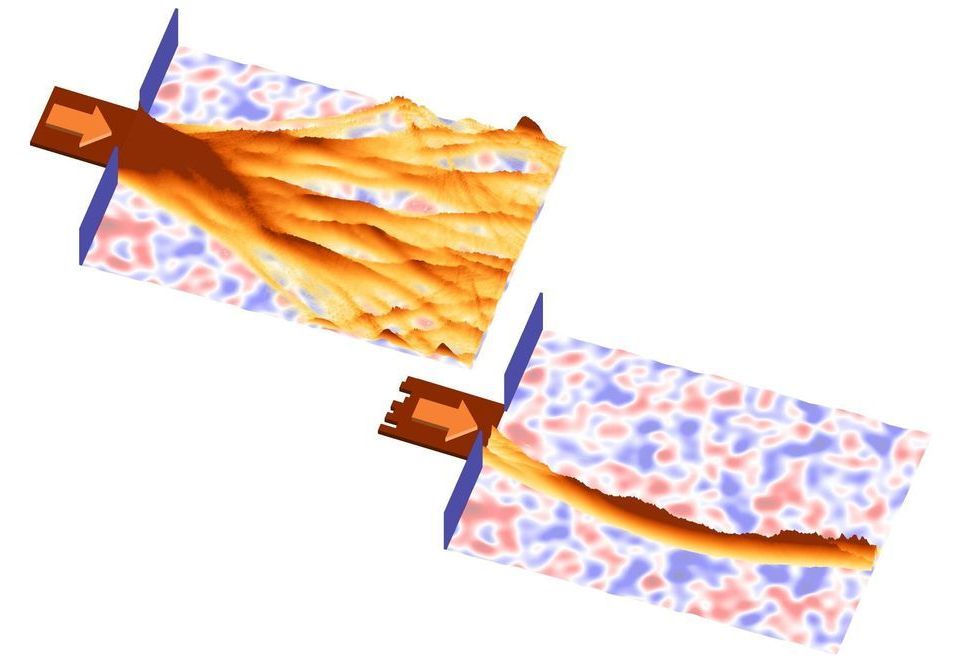With Earth-like canyons and oceans of liquid methane, Saturn’s moon Titan is one of the most fascinating places in the solar system. To better understand this weird world, scientists recreated Titan’s alien oceans in the lab, producing new types of crystals that don’t occur naturally on Earth but may form a common crust on Titan.
Research from Johns Hopkins Medicine has revealed some cases of schizophrenia can be associated with abnormal protein buildup in the brain similar to that seen in cases of Alzheimer’s and other neurodegenerative disorders. It’s hoped the discovery will lead to better diagnostic strategies identifying specific types of schizophrenia.
Sneaky molecular biology tricks bacteria into killing themselves, in place of antibiotics.
If we could trap light it could be used as a force field or even a lightsaber in future developments :3.
Quantum computers, which use light particles (photons) instead of electrons to transmit and process data, hold the promise of a new era of research in which the time needed to realize lifesaving drugs and new technologies will be significantly shortened. Photons are promising candidates for quantum computation because they can propagate across long distances without losing information, but when they are stored in matter they become fragile and susceptible to decoherence. Now researchers with the Photonics Initiative at the Advanced Science Research Center (ASRC) at The Graduate Center, CUNY have developed a new protocol for storing and releasing a single photon in an embedded eigenstate—a quantum state that is virtually unaffected by loss and decoherence. The novel protocol, detailed in the current issue of Optica, aims to advance the development of quantum computers.
“The goal is to store and release single photons on demand by simultaneously ensuring the stability of data,” said Andrea Alù, founding director of the ASRC Photonics Initiative and Einstein Professor of Physics at The Graduate Center. “Our work demonstrates that is possible to confine and preserve a single photon in an open cavity and have it remain there until it’s prompted by another photon to continue propagating.”
The research team used quantum electrodynamics techniques to develop their theory. They investigate a system composed of an atom and a cavity—the latter of which is partially open and therefore would normally allow light trapped in the system to leak out and be quickly lost. The research team showed, however, that under certain conditions destructive interference phenomena can prevent leakage and allow a single photon to be hosted in the system indefinitely. This embedded eigenstate could be very helpful for storing information without degradation, but the closed nature of this protected state also creates a barrier to exterior stimuli, so that single photons also cannot be injected into the system. The research team was able to overcome this limitation by exciting the system at the same time with two or more photons.
Symmetry is a fundamental characteristic in nature. Understanding the mechanisms that break symmetries is essential to scientific research. Spontaneous symmetry breaking (SSB), in particular, occurs when thermal or quantum fluctuations drive a system from a symmetric state into an ordered state, as it occurs when a liquid turns into a solid. This mechanism allows researchers to classify different phases of matter according to the different patterns generated by the broken symmetry.
In the last decades, topology has also been recognized as a crucial characteristic to describe how matter is organized at the fundamental level. In this case, it is no longer the breaking of certain symmetries, but their conservation, which gives rise to novel states of matter, the so-called symmetry-protected topological (SPT) phases. Different topological phases might present the same symmetries, but they can be distinguished by a global topological invariant, which takes integer values and is preserved under continuous deformations.
Current research in condensed matter physics aims to understand how symmetry breaking and symmetry protection compete, in particular in the presence of interactions. In a recent paper published in Nature Communications, ICFO researchers Daniel Gonzalez and Przemyslaw Grzybowski, led by Alexandre Dauphin and ICREA Prof. at ICFO Maciej Lewenstein, in collaboration with Alejandro Bermudez from the Universidad Complutense in Madrid, report how these two processes cooperate, giving rise to new strongly-correlated topological effects.
According to a first-of-its-kind study, cities with a higher incidence of a certain kind of racist tweets reported more actual hate crimes related to race, ethnicity, and national origin.
A New York University research team analyzed the location and linguistic features of 532 million tweets published between 2011 and 2016. They trained a machine learning model—one form of artificial intelligence—to identify and analyze two types of tweets: those that are targeted—directly espousing discriminatory views—and those that are self-narrative—describing or commenting upon discriminatory remarks or acts. The team compared the prevalence of each type of discriminatory tweet to the number of actual hate crimes reported during that same time period in those same cities.
The research was led by Rumi Chunara, an assistant professor of computer science and engineering at the NYU Tandon School of Engineering and biostatistics at the NYU College of Global Public Health, and Stephanie Cook, an assistant professor of biostatistics and social and behavioral sciences at the NYU College of Global Public Health.
The formation of air bubbles in a liquid appears very similar to its inverse process, the formation of liquid droplets from, say, a dripping water faucet. But the physics involved is actually quite different, and while those water droplets are uniform in their size and spacing, bubble formation is typically a much more random process.
Now, a study by researchers at MIT and Princeton University shows that under certain conditions, bubbles can also be coaxed to form spheres as perfectly matched as droplets.
The new findings could have implications for the development of microfluidic devices for biomedical research and for understanding the way natural gas interacts with petroleum in the tiny pore spaces of underground rock formations, the researchers say. The findings are published today in the journal PNAS, in a paper by MIT graduate Amir Pahlavan Ph.D. ‘18, Professor Howard Stone of Princeton, MIT School of Engineering Professor of Teaching Innovation Gareth McKinley, and MIT Professor Ruben Juanes.
Waves do not always spread uniformly into all directions, but can form a remarkable “branched flow.” At TU Wien (Vienna) a method has now been developed to control this phenomenon.
In free space, the light wave of a laser beam propagates on a perfectly straight line. Under certain circumstances, however, the behavior of a wave can be much more complicated. In the presence of a disordered, irregular environment a very strange phenomenon occurs: An incoming wave splits into several paths, it branches in a complicated way, reaching some places with high intensity, while avoiding others almost completely.
This kind of “branched flow” has first been observed in 2001. Scientists at TU Wien (Vienna) have now developed a method to exploit this effect. The core idea of this new approach is to send a wave signal exclusively along one single pre-selected branch, such that the wave is hardly noticeable anywhere else. The results have now been published in the journal PNAS.
Circa 2016
Researchers studying nanowires have found a battery material that can be recharged for years, even decades.
Analyze genomic data in the cloud. Google Genomics offers petabyte scale and fast performance on Google Cloud Platform.









